How to grow Thai basil – expert care and growing tips for a bumper crop
Thai basil can be grown from seed, cuttings, or transplants and will thrive in a sunny spot in the backyard

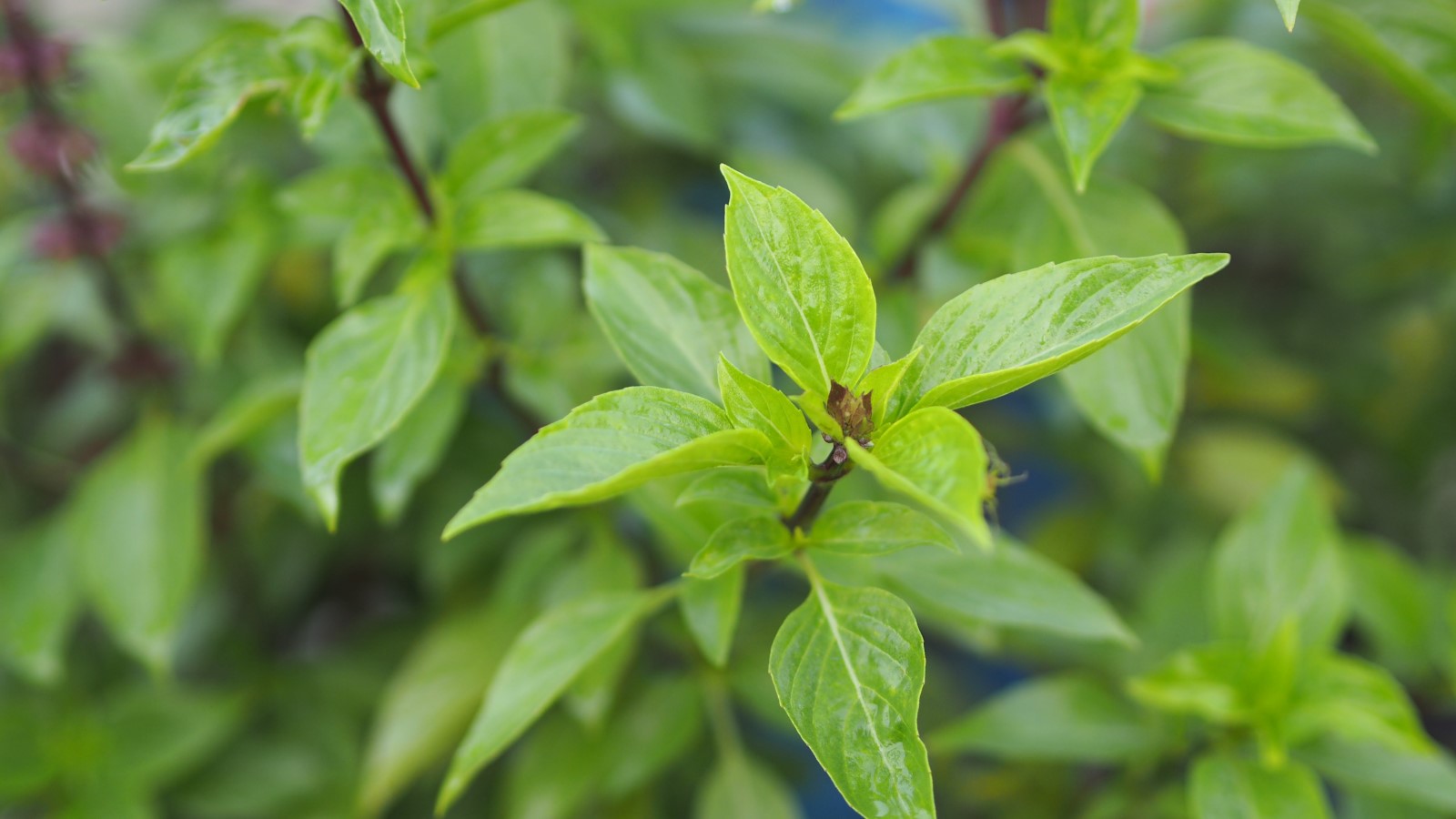
Thai basil is a distinctly aromatic herb that is popular in southeast Asian cuisines and grown around the world for its special aniseed flavor. If you are wondering how to grow Thai basil, rest assured it is an easy herb to grow at home, providing you can give it lots of sun and light. The most common variety you see is Thai basil ‘Siam Queen’.
It is grown for both culinary and ornamental uses, with its unique purple stems, dark green leaves and purple-colored veins. However, Thai basil remains mostly popular as a culinary herb and I even grew it for chefs in England, who often turned it into a sorbet to accompany raspberries.
Knowing how to grow basil opens up the chance to discover a wide variety of aromatic types of basil – with a reputed 100 different varieties in existence globally. Thai basil does offer something new with its distinguishing look and licorice-like flavor.
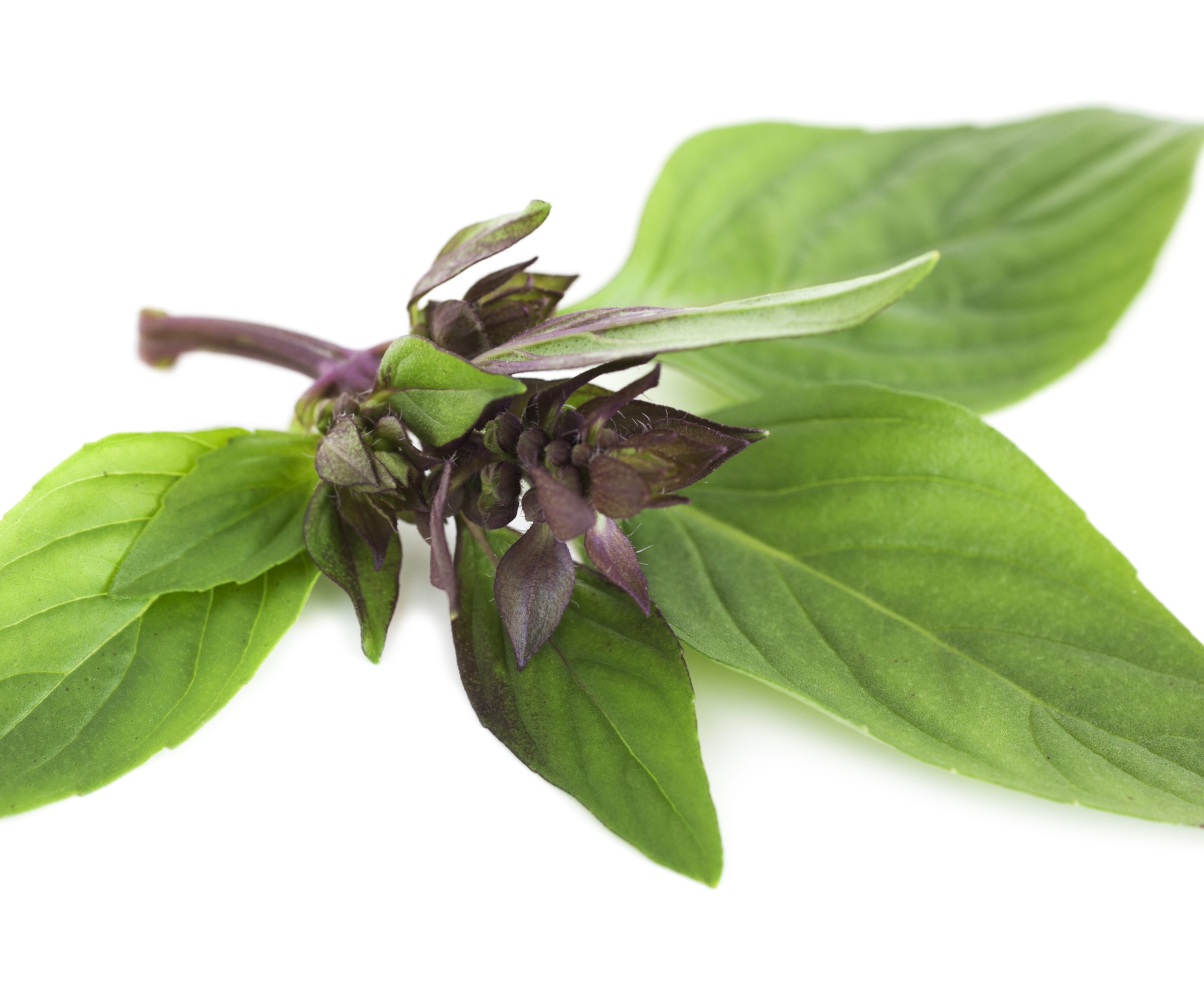
Thai basil has small and narrow leaves compared to other types of basil, as well as purple stems
Expert tips for growing Thai basil
Thai basil can be grown either from seed, from transplants, or from cuttings. It is an aromatic herb that grows best in fertile and well-draining soil in sunny positions, either indoors or outdoors, where it can get temperatures between 70˚F to 90˚F. However, it can still grow in temperatures as low as 50˚F.
Getting the ideal conditions right is integral to strong plants, as growing basil in the wrong spot and not giving it the sun it thrives for can be a common herb gardening mistake.
How to grow Thai basil from seed
Thai basil should be sowed indoors from late-winter onwards, providing you have a heated greenhouse, propagator, or space on a warm windowsill for early sowings.
Sow the seeds in trays of seed compost around half an inch deep and cover with finely-sieved compost or vermiculite. Keep the tray somewhere with a temperature around 64-68˚F and ensure it is moist, but not dripping wet. With good temperatures and light, the seeds should germinate within 10 days.
Design expertise in your inbox – from inspiring decorating ideas and beautiful celebrity homes to practical gardening advice and shopping round-ups.
Once the risk of frost has passed and the temperatures warmed, you can then sow Thai basil seeds in situ, whether it be in the ground or in pots or containers. In my experience, I found that Thai basil seeds have a low germination rate so I would recommend for anyone to sow more seeds than they think they need. I suffered with sporadic germination even with the luxury of having heated propagation benches in a warm greenhouse.
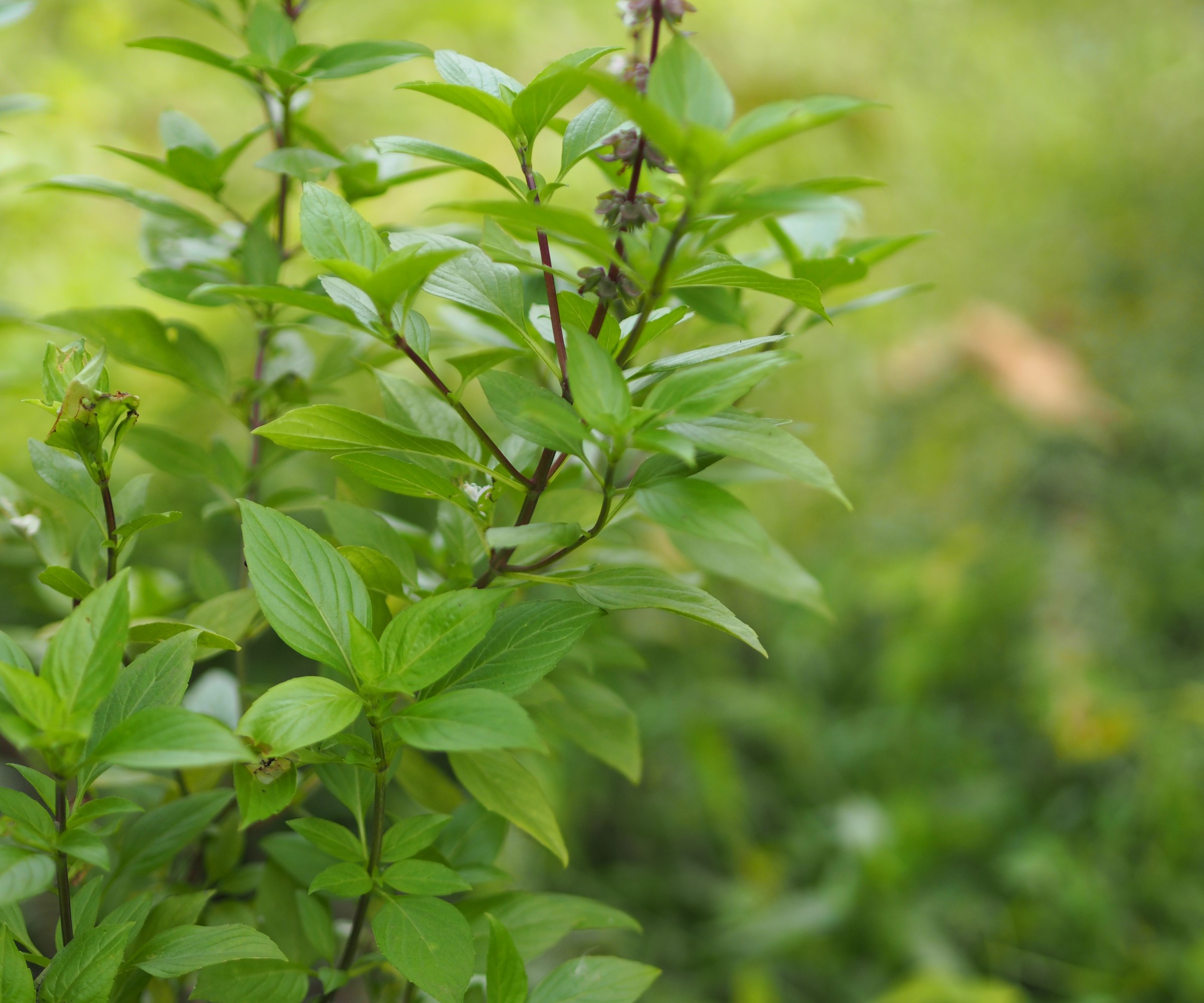
Thai basil is a compact basil and can ultimately grow up to one-and-a-half feet in height
How to grow Thai basil from cuttings
To grow Thai basil from cuttings is a fairly simple process and a good way to get new plants for free.
Take a 4 inch section of the stem, cutting below a node and ensuring that the stem has not gone to flower. Remove all the leaves from the bottom half of the cutting and place it in a small container filled with 2 inches of water. Place the container in a light space, such as on a windowsill, but out of direct sunlight.
The roots should sprout within a week and, when they are at least 2 inches long, plant the cutting in a pot filled with compost to grow on.
How to plant Thai basil
Thai basil plants, whether from seed, cuttings or transplants, can be planted in many different situations. They are perfect for kitchen gardens or herb gardens and can thrive planted in raised beds or containers.
Thai basil should not be planted outdoors until after the risk of the last frost has passed. The soil should be at least 50˚F before the plants are put into the ground, or into a container. It is all about giving them the right amount of sun that these plants need to thrive. Not giving the herb enough light, or enough sun, will cause basil plants to turn yellow as the plant is stressed.
Henry Bravo, founder of SmartGardenHome.com, advises that getting that perfect location for a Thai basil plant is ‘essential’ as it will struggle without enough sunlight.
‘Thai basil is a delightful addition to any herb garden or kitchen, with its unique flavor and fragrance that adds depth and complexity to many dishes,’ adds Henry. ‘It requires full sun exposure to thrive, so choose a spot that receives at least six hours of direct sunlight per day. Thai basil also prefers well-draining soil that is slightly acidic with a pH between 6.0 and 7.5. If your soil is unsuitable, consider amending it with compost or sand to improve drainage and nutrient availability.’
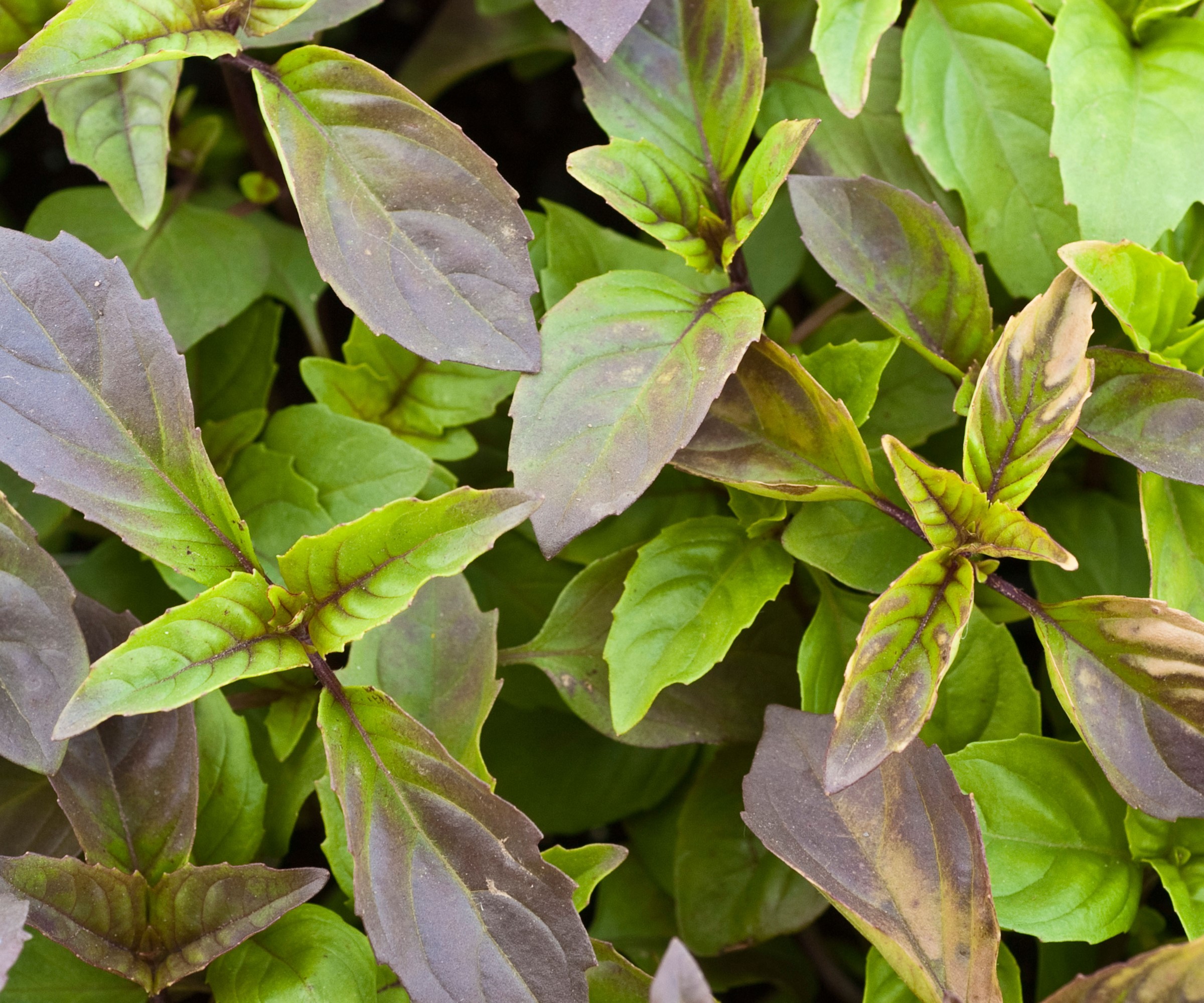
Thai basil plants require 6 to 8 hours of sunlight each day
How to look after Thai basil
Thai basil requires regular watering and it wants to be grown in moist soil, but not waterlogged. Make sure to check the moisture levels every few days and it should be more regular than that if you are growing the plants in a pot or herb planter.
Both over-watering and under-watering can lead to basil wilting so it pays dividends to keep a good eye on your basil plants. When you water the plants, always water basil at its base – rather than over the leaves – and water in the morning to allow any water that gets on the leaves a lot of time to evaporate and reduce the risk of fungal diseases. Plants should be fed with a balanced organic fertilizer at least once a month to give them an increased boost of nutrients.
Gardening expert Maggie Stuckey has advice on growing Thai basil in her new book ‘The Container Victory Garden’, available on Amazon. She recommends that the best method of how to prune basil and get a good crop of basil leaves is to pinch out the stems to keep the plant producing side branches with more and more leaves.
‘It's really straightforward and extremely effective: if you remove the growing tip from any stem or branch, the next buds lower down will be stimulated to open up and develop into side branches,’ says Maggie.
‘If you then pinch out those stems once they grow a bit and develop their own buds, two more lower buds will open, and so on and on. Do this faithfully, and your basil plant will maintain a full, bushy shape, which is far more attractive than something gone leggy, and will give you lots more leaves.’
Thai basil, like all basil, will try to start flowering if the temperature gets too hot, or the soil dries out too much. When the plant flowers, it impairs the flavor of the aromatic leaves. Make sure to remove any flowering stems as soon as you spot them.
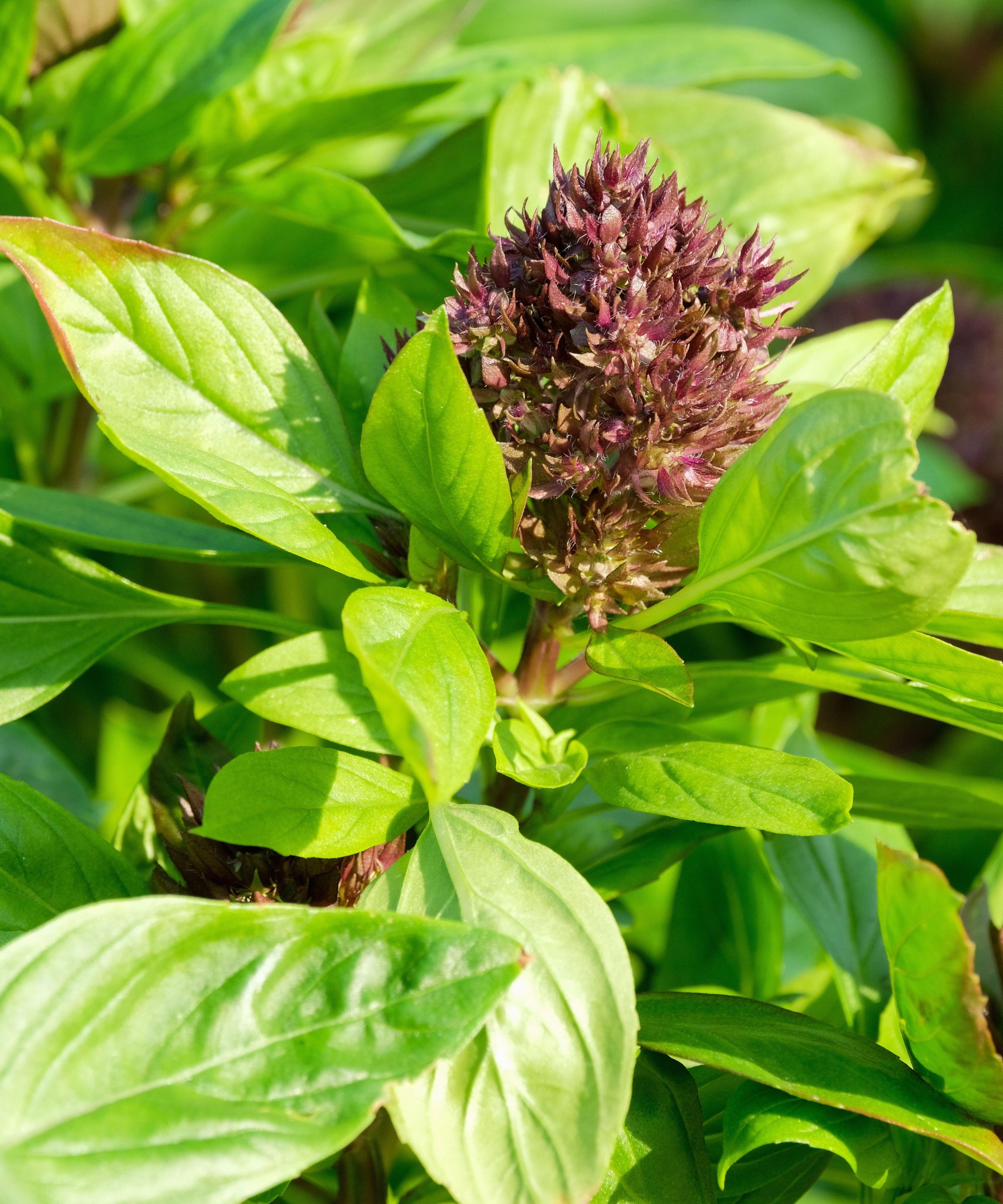
Flower stalks need to be removed off Thai basil as they impair the flavor of the leaves
How to harvest Thai basil
Thai basil is grown for its highly fragrant leaves that are full of aniseed flavor. They are highly popular herb garden ideas and the best way to start harvesting Thai basil is when it has grown to around 8 inches tall.
Basil grows fast and you want to harvest the leaves before the plant tries to flower. Regular harvesting is necessary to keep the plant encouraging new growth and new shoots and Thai basil leaves are best used fresh off the plant.
When harvesting basil, simply pinch off individual leaves at their base as and when you need them - if you only need one or two for a particular recipe. Or cut the whole shoot just above a pair of leaves for a larger harvest that will encourage the plant to bush as it stimulates side branches.
The best method for how to harvest basil is to pick from the top of the plant and work downwards. Never cut more than two-thirds of the plant back when harvesting as it will struggle to regrow after that level of cutting. Come the end of the season, if the plant has been grown as an annual, you can lift the entire plant and, if you are left with more leaves than you require, Thai basil leaves can be dried or frozen to store.
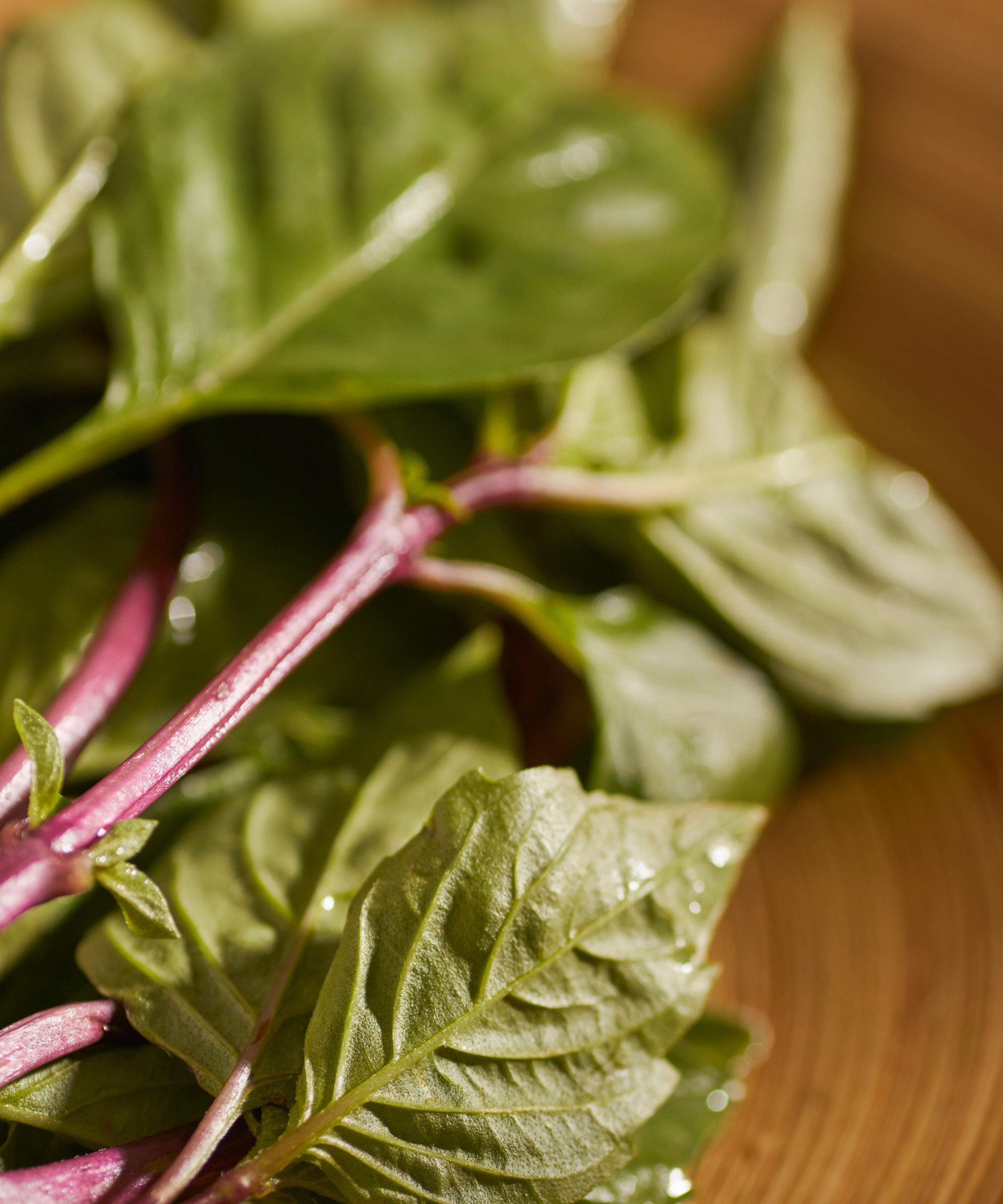
Thai basil leaves are widely used in southeast Asian cuisine
FAQs
Can you grow Thai basil indoors?
Thai basil can successfully be grown indoors, providing you can give the plant the sunlight and temperatures that it requires. You want to give it at least six hours of direct sunlight and temperatures of at least 70˚F. Growing herbs indoors can be done on a windowsill or in pots in sunny spots around the home and artificial grow lights can be used to supplement light levels as required.
Does Thai basil come back every year?
Thai basil is generally grown as an annual as the leave’s flavor diminishes the older the plant gets. The plant also struggles once the temperatures drop, however, Brock Ingham, editor of Bigger Garden, explains how Thai basil could be grown as a perennial in some milder regions, such as USDA Zones 10 and 11.
He adds: ‘In regions with mild winters, where the temperature does not drop below 32˚F, Thai basil can continue to grow throughout the winter. In such regions, Thai basil may die back to the ground in the winter but will regrow in the spring from the roots or any remaining stems.’
Unless you do live in one of these zones, it is best recommended to grow Thai basil as an annual and propagate new plants from seed or cuttings each year.
Should you let Thai basil flower?
No, Thai basil should not be left to flower and good care and attention should be paid to remove the flowering stalks as quickly as you can. When the plant starts to flower, the flavor of the leaves alter due to the plant putting its energy into the flowers and away from the leaves. Keep a regular eye on the plants as, especially in periods of heat, basil can quickly go to flower.
Thai basil is a fantastic plant to grow at home, especially if you are a fan of southeast Asian cuisine. Being able to pick a few fresh leaves from your yard, or windowsill, to add to dishes offers a taste that outshines that of store-bought basil. It can be a simple plant to grow, I did have issues with inconsistent germination but I still always got plants in good numbers from my sowings.
There is always the option to buy Thai basil as transplants, which removes any risks with sowings not going to plan. The scent from the plants, the fact they are a great plant for pollinators, attracting bees, butterflies and other pollinators into a yard, and their flavorful leaves, all combine to make Thai basil a fantastic addition to any herb or kitchen garden.

Drew has worked as a writer since 2008 and was also a professional gardener for many years. As a trained horticulturist, he worked in prestigious historic gardens, including Hanbury Hall and the world-famous Hidcote Manor Garden. He also spent time as a specialist kitchen gardener at Soho Farmhouse and Netherby Hall, where he grew vegetables, fruit, herbs, and cut flowers for restaurants. Drew has written for numerous print and online publications and is an allotment holder and garden blogger. He is shortlisted for the Digital Gardening Writer of the Year at the 2025 Garden Media Guild Awards.